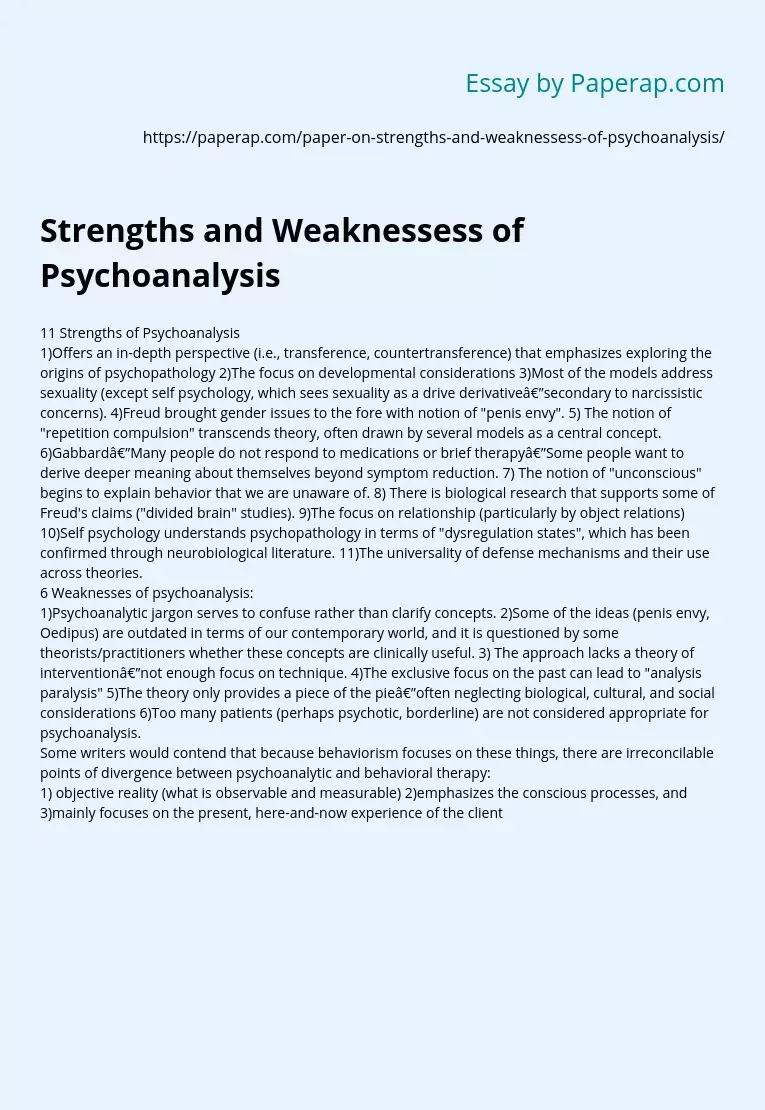Strengths and Weaknessess of Psychoanalysis
7) The notion of “unconscious” begins to explain behavior that we are unaware of. 8) There is biological research that supports some of Freud’s claims (“divided brain” studies). 9)The focus on relationship (particularly by object relations) 10)Self psychology understands psychopathology in terms of “dysregulation states”, which has been confirmed through neurobiological literature. 11)The universality of defense mechanisms and their use across theories.
2)Some of the ideas (penis envy, Oedipus) are outdated in terms of our contemporary world, and it is questioned by some theorists/practitioners whether these concepts are clinically useful. 3) The approach lacks a theory of intervention—not enough focus on technique. 4)The exclusive focus on the past can lead to “analysis paralysis” 5)The theory only provides a piece of the pie—often neglecting biological, cultural, and social considerations 6)Too many patients (perhaps psychotic, borderline) are not considered appropriate for psychoanalysis.
Strengths and Weaknessess of Psychoanalysis. (2018, Feb 09). Retrieved from https://paperap.com/paper-on-strengths-and-weaknessess-of-psychoanalysis/

